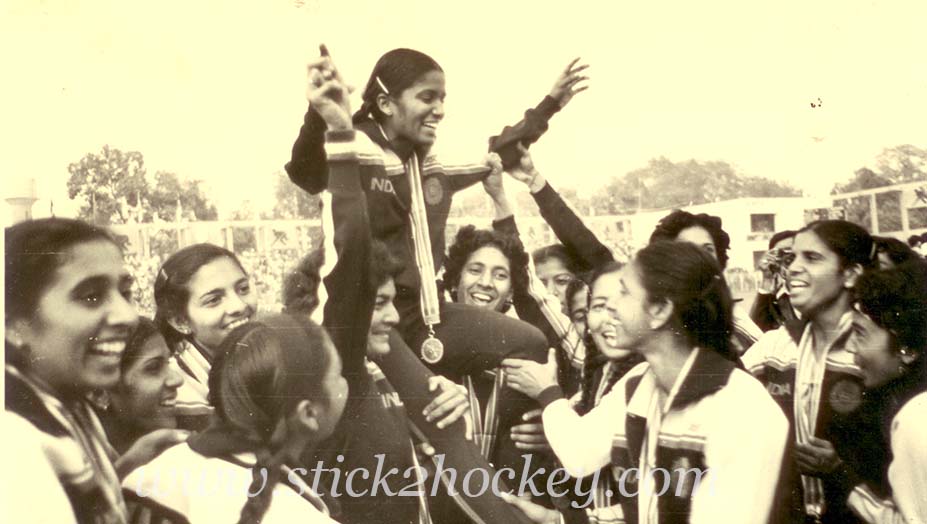Share
ERROL D’CRUZ
Women’s hockey made its debut in the Asian Games in 1982. The Games were held in New Delhi and unlike the men’s team way back in 1958, the Indian women duly took their place on the top podium.
However, the images of Eliza Nelson and her team celebrating the epic are now distant. More than four decades later, that gold medal remains the only Asiad top honour won by the Indian women’s team. Two silver (in 1998 and 2018) and three bronze (1986, 2006 and 2014) were the best the Indian ladies could wrest in an Asian circuit that has become far more competitive than it was in 1982.
In the years gone by, the power equation changed rapidly with the baton handed over the South Korea (five titles) and then to China (three titles) before Japan, always in the mix, landed their first gold medal five years ago in Jakarta-Pelembang where they out-thought favourites India 2-1 in the final for their first title.
Hangzhou next week throws up a lot of intrigue over the women’s event. India have re-asserted their bid for a long overdue title with solid performances in Europe recently where they won a tournament in Barcelona, Spain, accounting for the hosts and England in the process.
South Korea began writing a new chapter in Asian – and world hockey – with gold at home in Seoul in 1986 where their men’s team also emerged as the new force. The Koreans raked in four titles on the trot in a total of five registered in the Asian Games.
But there were signs of the new force on the horizon. At Busan in 2002, China upstaged South Korea in their own backyard to win their first gold medal. They went on to bag a hat-trick with gold at Doha in 2006 and another in front of their own fans in Guangzhou in 2010.
The Chinese bid to equal South Korea’s four-in-a-row, however, was thwarted by the former champions, playing at home in Incheon but only after a shootout that brought the hosts their fifth Asiad gold.

Indian women won the inaugural edition in 1982, gold eludes after that
India, seeking their first title in 36 years, were regarded hot favourites on form at the 2018 Asiad. Going into the final against Japan, it appeared that Rani Rampal, the face of women’s hockey in the country, would lead her team to the top podium. But Japan, automatically qualifying for the 2020 Tokyo Olympics as hosts, played for the intrinsic honour that the gold medal would bring. They won a taut final 2-1 and emulated their men who strode the top podium just a day earlier with a shootout win over Malaysia.
For the second time, India settled for second-best. In 1998 at Bangkok, it was South Korea who denied the inaugural edition champions the top prize, also with a 2-1 scoreline.
The Koreans, however, have slipped behind after their success in 2014 at home and have been conspicuous by their absence on the podium since then. China, on the other hand with a total of two silver and three bronze – one coming in 2018 – are a team to be watched at Hangzhou and not merely for playing at home. The Chinese have shown they mean business by hiring former Australian legend Alyson Annan as coach and inducting the legendary Ric Charlesworth in the panel that also includes former Dutch drag-flicking maestro Taeke Taekema.
On form, it should be India vs China in the final. India have been riding high in recent times although the iconic Rampal is no longer in Dutch coach Janneke Schopman’s scheme of things and now finds herself coaching India’s sub-junior team.
Both nations have had FIH Pro League experience. India were granted a place in the 2021-22 edition following the pullout of Australia and New Zealand during the Covid-19 pandemic and did well to finish third. India were not slotted in for the subsequent season but have booked their spot in the forthcoming edition by winning the Nations Cup in Valencia Spain last year.
China have blown hot and cold, regularly participating in the FIH Pro League and it was plain to see Annan moving her players around to find the best combination and form with the Asiad firmly in mind. The sixth spot in the elite nine-nation league must surely boost their morale.
India are in Pool A with South Korea, Malaysia, Hong Kong and Singapore. Malaysia’s recent ability to stretch higher-ranked teams makes this a marginally tougher pool. In Pool B, China have defending champions Japan, Kazakhstan, Indonesia and Thailand for company,
India and South Korea should make the semi-finals from their pool, unless Malaysia have other ideas, while China and Japan should make the grade from theirs.


